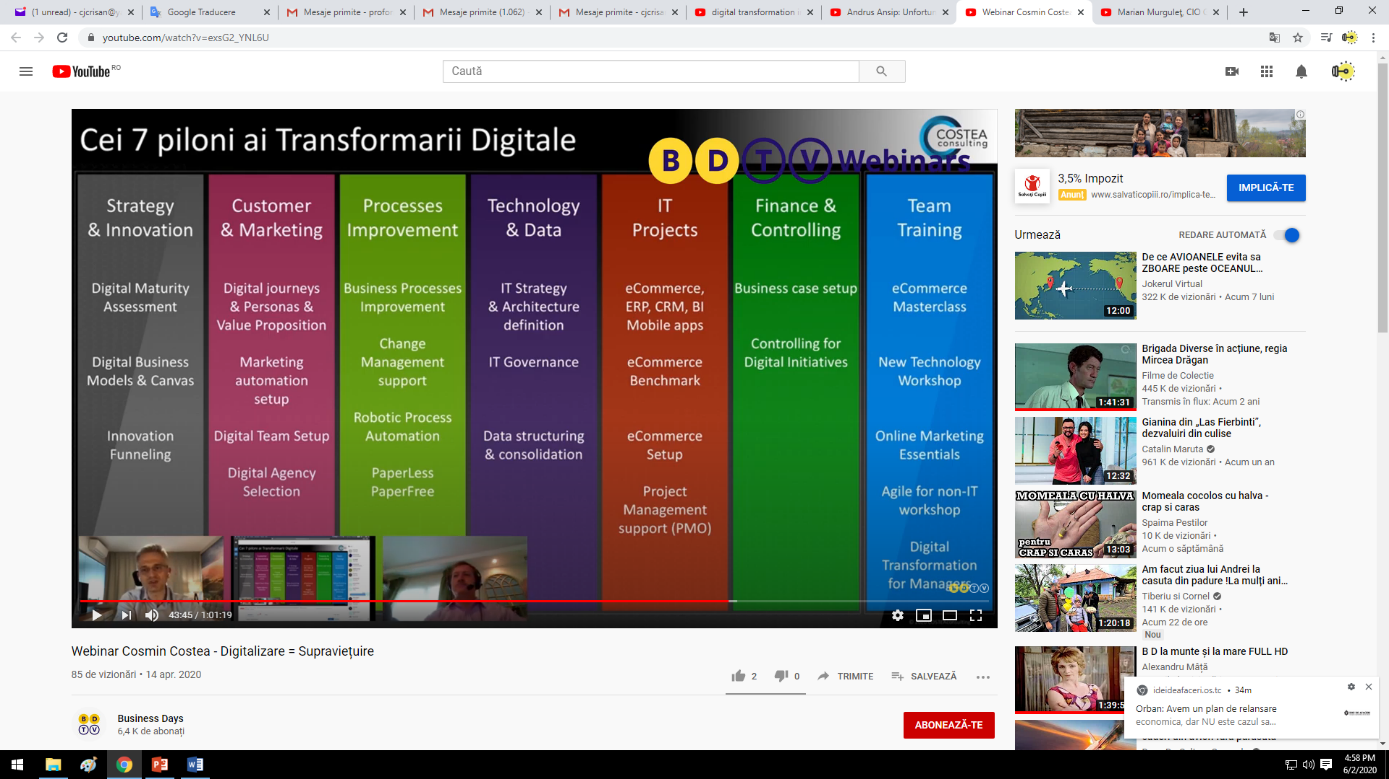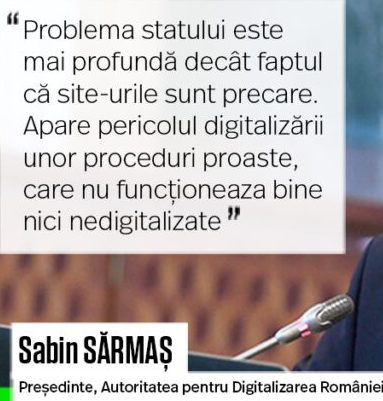P4
1. Current status of Digitisation in Romania.
Digitization in Romania started hard. A 2017 study on perception of digitization[1] by Romanian managers, you can now wach in the joined video clip, shows us some of the stagnation reasons.
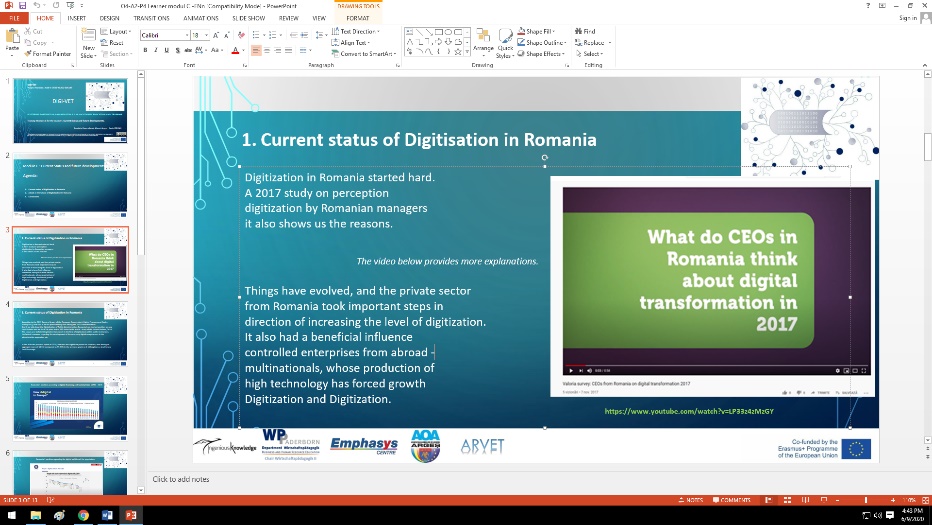
https://www.youtube.com/watch?v=LP33z4zMzGY
Things have evolved, and the private sector from Romania took important steps in direction of increasing the level of digitization.
It also had a beneficial influence controlled enterprises from abroad – multinationals, whose production of high technology has forced the growth of Digitization and Digitization
According to the 2019 Country Report of the European Commission’s Digital Economy and Society Index [2] (DESI), Romania is on the penultimate place among the 28 EU member states.
And if we talk about the Digitalization of Public Administration, Romania is on the last position among the EU states and on the 67th place out of 193 states in the world – study of the United Nations, 2019. The causes identified by the author are: deficient legislative framework in the field of digitization within public institutions, the lack of a concern regarding the development of the necessary digital competences in the administrative apparatus, etc.
In line with the previous report in 2018, Romania has slightly improved its situation, now having an aggregate score of 33.5% (compared to 33.21% in the previous year), so it still registers a level below the EU average.

The graph above shows the 5 main criteria of the DESI Index: Connectivity, Human Capital, Use of the Internet, Integration of digital technologies, digital public services.
How is Romania in each of them:
- Connectivity. 22nd out of 28. Although coverage with fixed lines (89%) and mobile (63%) is well below the EU average, we compensate with internet speed (70% fast connections) and low costs (1.1% of revenue).
- Human Capital. We are in last place, 28 out of 28. We have the lowest percentage of internet users (56%), we are penultimate in terms of basic skills (28% of the population) and the number of IT employees (1.9%) and on the 17th place in the number of graduates of faculties with IT profile (16 / thousand inhabitants).
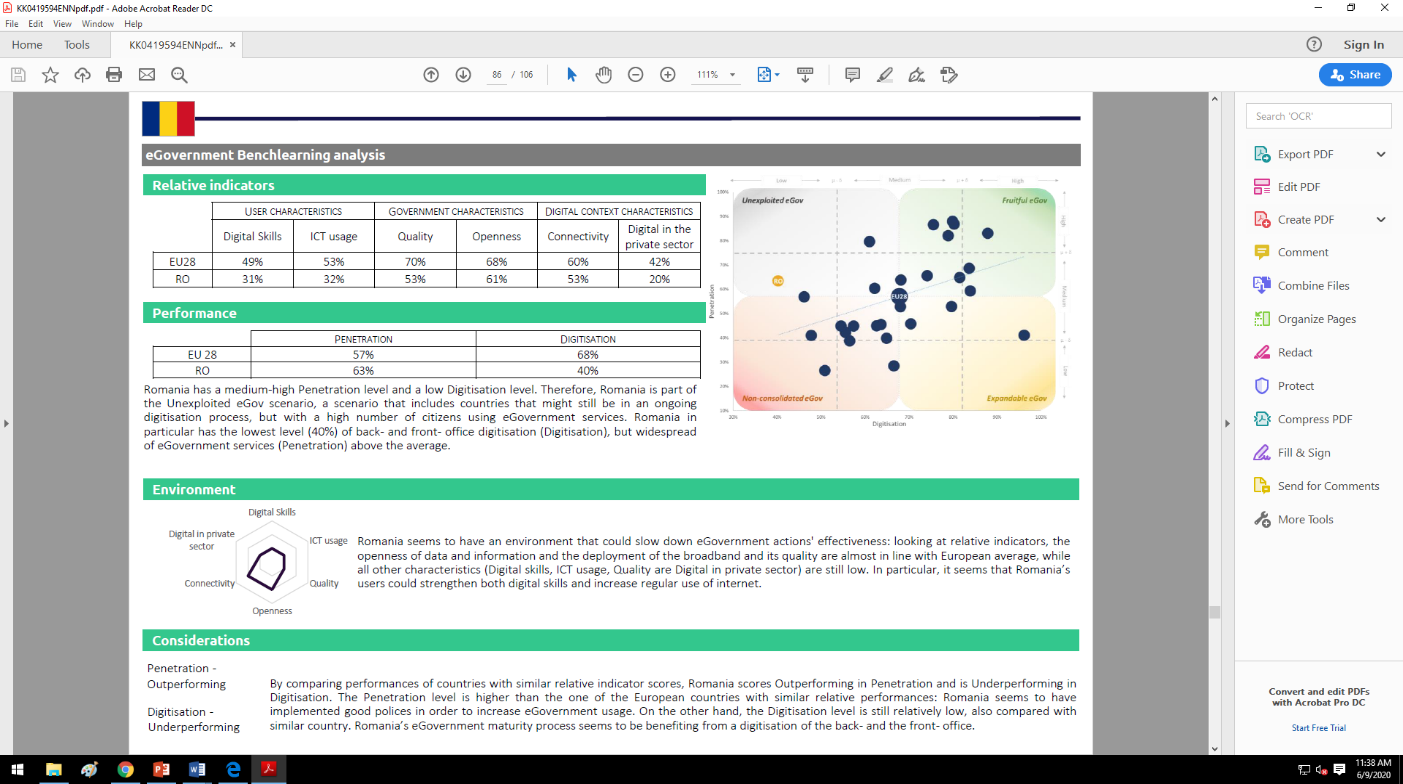
- Use of the Internet. We are the last place in the EU, 28 out of 28. 63% of users read news online, 67% listen to music, 6% watch video on demand, 8% use banking services. Only 18% shop online, but 74% use social media.
- Integration of digital technologies. We are the last place in the EU, 28 out of 28. Few companies exchange information electronically (22%), use social platforms to promote themselves (8%), issue electronic invoices (8%), use cloud services (5%) or sell online (7% as number of companies, 4.3% as turnover).
- Digital public services: We are ranked 27th out of 28. Only 6% of internet users access e-government solutions. They contain few pre-filled forms (12%) and completely solve the problem for which they were accessed in 55% of cases. The score for the publication of data by the government is 63%.
And all these come to complete the paradox in Romania and the gap created between the private and the state sector:
- from the most valuable start-up of artificial intelligence in the world (UiPath), to the tons of papers in which ANAF officials are buried, who drag taxpayers into the pit of documents.
- Two images – two extremes: the performance of the private IT&C sector and the freezing of the public administration in the last century.
Romania goes up, the Administration lags behind, like a boulder at the feet of the economy and society.
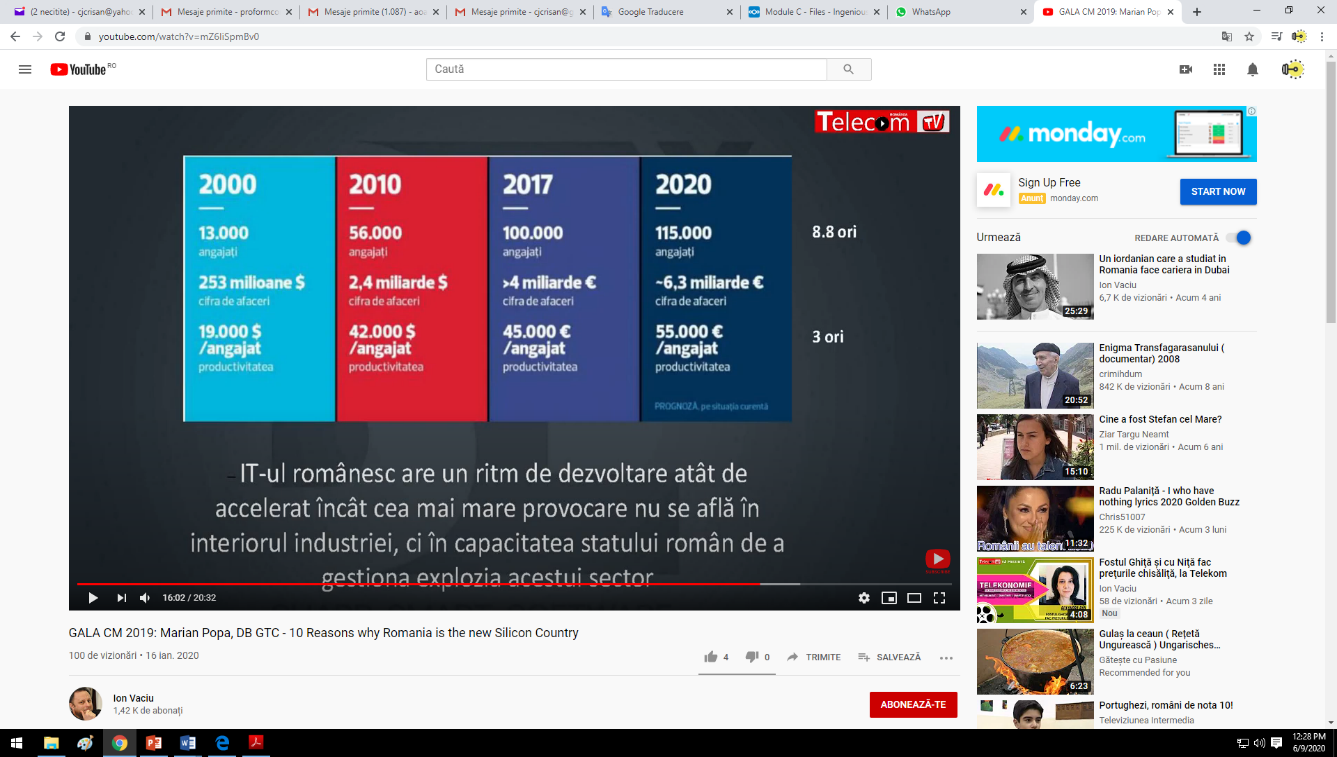
GALA CM 2019: Marian Popa, DB GTC – 10 Reasons why Romania is the new Silicon Country
2. A look at the future of Digitalization in Romania
As Mr. Marian POPA, CEO DB Global Technology Center said, on the occasion of his intervention [3] at the 2019 Mobile COMMUNICATIONS GALA – „DIGITAL TRANSFORMATION @ 5G: 10 Reasons why Romania is the New Silicon Country”, Romania meets all the conditions and has all the advantages to be able to aim for the title of „Silicon Country”.
TASK: watch the next video to it to see the speaker’s arguments.
https://www.youtube.com/watch?v=mZ6IiSpmBv0

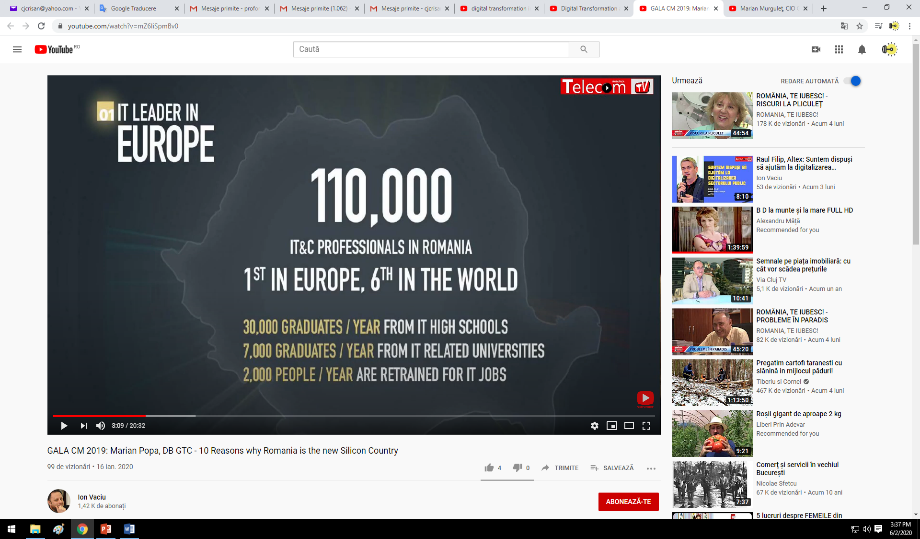

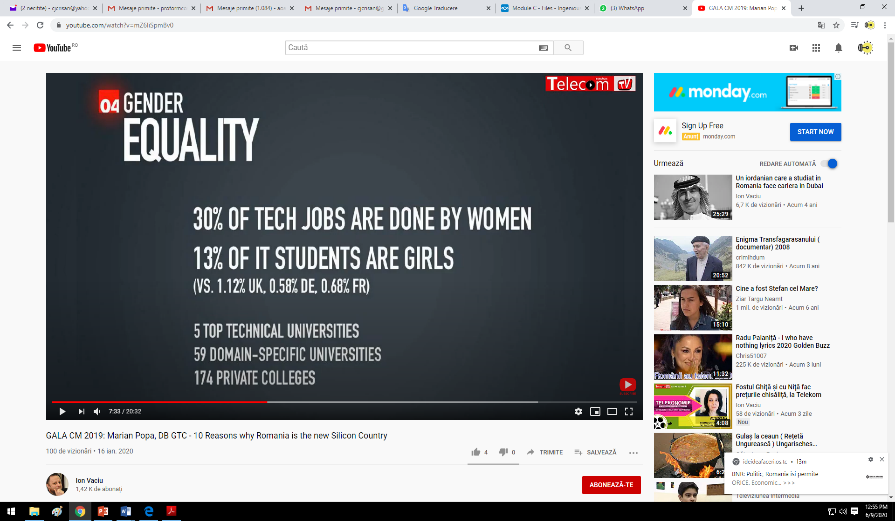

An interesting and instructive analysis, about the future of digitalization in the private sector, can be found in the video material below:
Webinar Cosmin Costea – Digitalisation = Survival
https://www.youtube.com/watch?v=exsG2_YNL6U
Because it has become clear to everyone that digitalization and digital transformation have become, from “nice to have”, a “must to have” to exist in the current market and especially in the future.
That is why, regarding the digitalization of the state sector in Romania, things have moved to a different level and work is being done with a different speed. But in this field, we must act with great care and responsibility, as well pointed out by Mr. Sabin Sărmaș – President of the Authority for the Digitalization of Romania (newly established – 13.02.2020)[4].
The problem of the Romanian state is deeper than the fact that the sites are precarious. There is a danger of digitization of bad procedures, which do not work well even undigitized.
The Government’s vision regarding the future of IT in Romania was presented by Mr. Marian Murgulet – Secretary of State; Chief Information Officer of the Romanian Government, on the occasion of the Conference “Romania’s Digital Transformation Agenda”: https://www.youtube.com/watch?v=rSocsXWbbQc
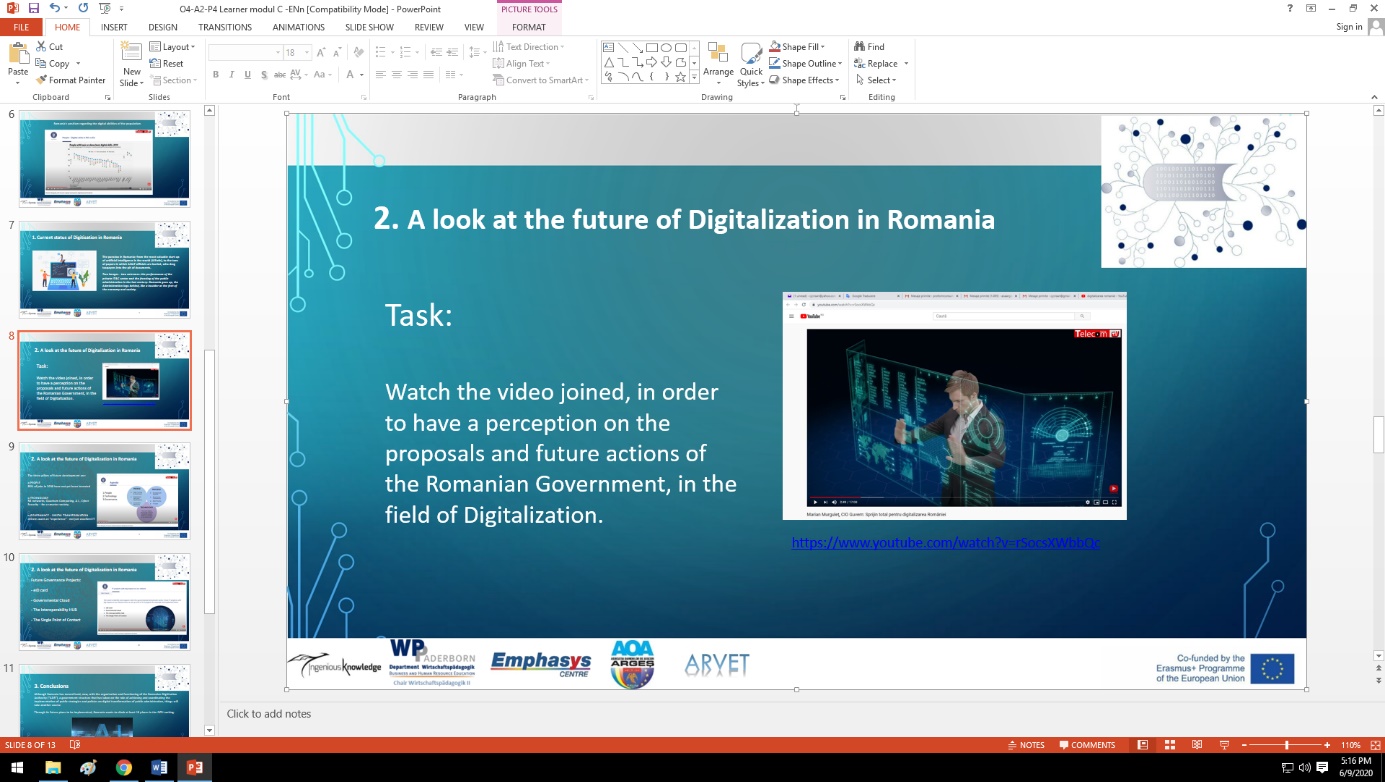
From the presented material, emerge the three pillars on which the future development of Romania will be based:
1. PEOPLE
85% of jobs in 2030 have not yet been invented.
2. TECHNOLOGY
5G networks, Quantum Computing, A.I., Cyber Security – enabling a smarter society.
3. GOVERNANCE – DIGITAL TRANSFORMATION
citizens want an “experience” – not just excellent IT.
3. Conclusions
Although Romania has moved hard, now, with the organization and functioning of the Romanian Digitization Authority (“ADR”), a government structure that has taken on the role of achieving and coordinating the implementation of public strategies and policies on digital transformation of public administration, things will take another course.
Through this plans and its future plans to be implemented, Romania wants to climb at least 10 places in the DESI ranking.
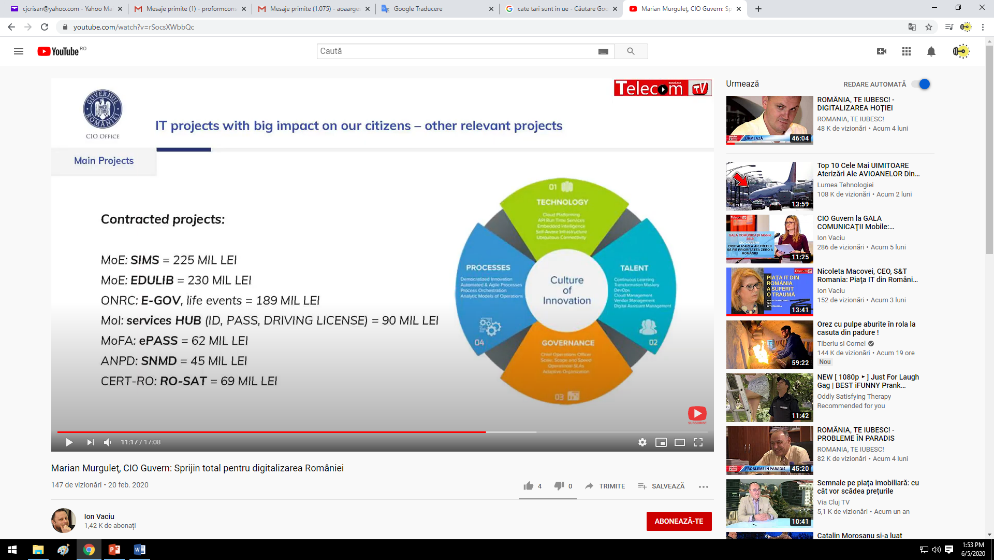
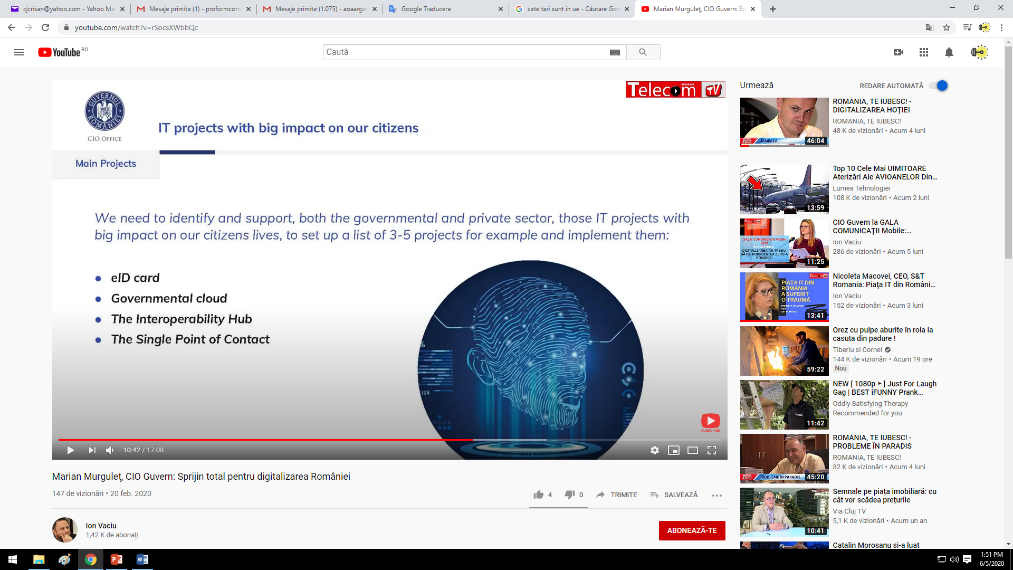
References.
- Digital transformation agenda of Romania; Marian Murgulet – Secretary of State; Chief Information Officer Gouvernment of Romania
- Cât de înapoiată e Administrația României față de economie și societate: Propuneri și soluții pentru digitalizare
- Cum evoluează statul în relația online cu cetățenii. Sabin Sărmaș, președinte ADR
- Raportul Comisiei Europene privind guvernarea electronică: eGovernment Benchmark 2019 https://ec.europa.eu/romania/news/20191018_Raport_comisia_eguvernare_ro
- Autoritatea pentru Digitalizarea României. Revitalizarea modernizării administrației publice.
- Digitalizarea României are tot ce-i trebuie: lipsesc doar viziunea, voința politică și procedura de implementare.
YouTube:
- Valoria survey: CEOs from Romania on digital transformation 2017 ↑
- Raportul Comisiei Europene privind guvernarea electronică: eGovernment Benchmark 2019/romania/file/datajpg_rodata.jpg ↑
- GALA COMUNICAŢII Mobile 2019 – DIGITAL TRANSFORMATION @ 5G: Hotel Radisson Blu, 9 Decembrie 2019, Bucuresti. ↑
- https://www.upgrade100.com/updates/exclusiv-digitalizam-romania-sau-birocratia-ce-e-autoritatea-pentru-digitalizarea-romaniei-si-ce-planuri-are-sabin-sarmas-presedintele-noii-structuri/ ↑
